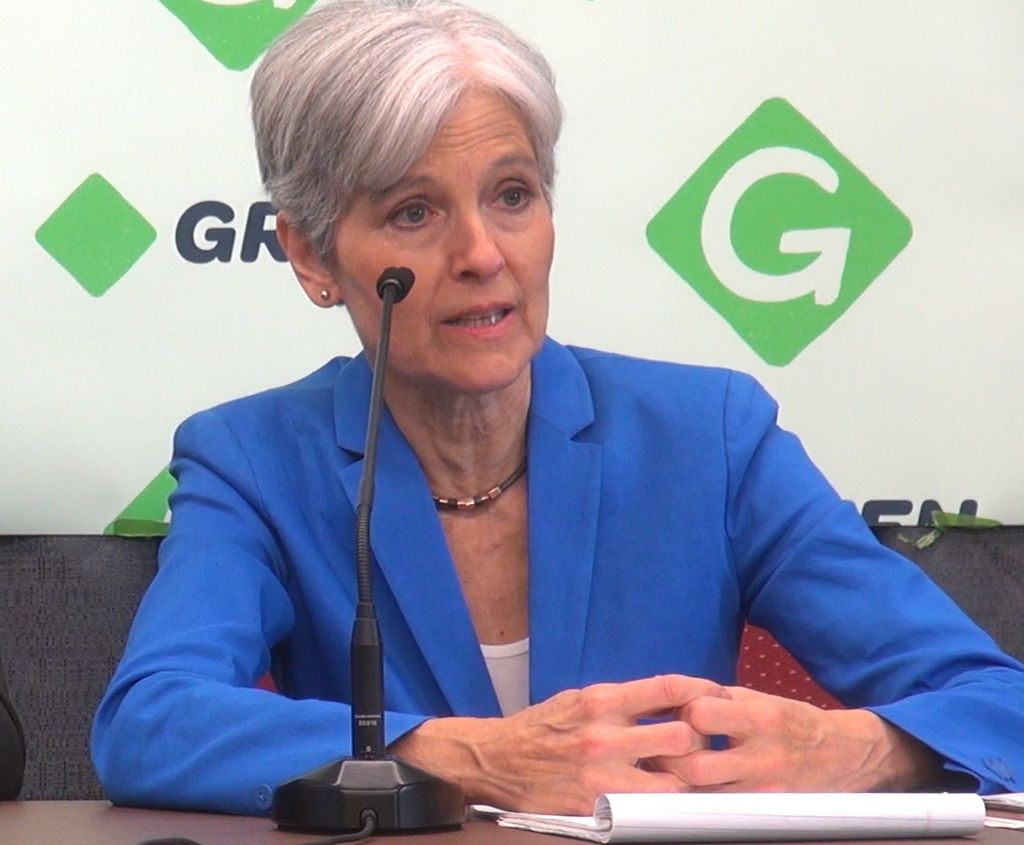We really have to stop saying “third party”. I understand the logic of the term, but it is still wrong. To say we have a two party system is probably a fair statement, since there are few office holders that are not either Republicans or Democrats, but when it comes to candidates, there are more.
Sunday night, I am going to see Jill Stein in Northampton. Maybe you heard of her. She is the Green Party candidate. My cousin thinks she hot. I’m mad at her because she is still covering up her tax returns.
Then there is Gary Johnson, the Libertarian candidate. Both he and Stein are on the ballot in enough states to win. But that’s not all.
There is Darrell Castle of the Constitution Party, Chris Keniston of the Veterans Party, Zoltan Istvan of the Transhumanist Party, Clifton Roberts of the Human Party and my son’s favorite Gloria Estala La Riva of the Party for Socialism and Liberation. There are also independent candidates, but since they are not claiming a party, they are not part of this discussion.
A run down of the candidates, that oddly does not include La Riva, is titled “Third Party Presidential Candidates“.
For now let’s just stick with the Greens and Libertarians as alternatives to the two parties of the two party system. And lets go with our kindergarten math. Let’s start with the Democrats since they are the oldest. That’s one. There there are the Republicans. That’s two. I’m going with the Green Party next, because I like them better and my cousin thinks Jill Stein is hot. That’s three, Then there are the Libertarians. That’s ??? Well by the logic of media discourse that is also three. Where as you and I both know, having graduated from Kindergarten, that four is next.
This bothers me because it distorts our thinking and plays into both the thinking that the two party system is inevitable and increases the isolation of those who think that there should be more than two parties.
Referring to both the Green Party and the Libertarian Party as “third parties” more of less says “We have two parties. Let’s really stretch our imagination. Maybe there could be something else. Let’s think. Isn’t there a number that comes after two? I remember something about that from school. Oh yeah. Three. So let’s call any party that is not one of the two, number three, but since voting is like going to the bathroom, we really know that there can only be number one or number two.”
In other words, the term “third party” ratifies the concept of the two party system.
Ironically, my other objection to the term “third party” is that it makes the two party system look worse than it really is. That’s because if you or I look at what is wrong with the two parties and come up with all the common sense things that should be changed, we think that we have come up with “THE ALTERNATIVE”. We’re going to be like the Sphere who went into Flatland to explain that there is a third dimension.
When Kent Hovind and Rudy Davis get together though, they are going to come up with something they will come up with a dystopian nightmare that, were it implemented, would have us really pining for the good old Republicans and Democrats. Just listen to Rudy talk about all the people that will be beheaded once his party takes power. Rudy sounds a little like the Soup Nazi substituting “Death penalty” for “No soup”
The term “third party” allows each alternative party to engage in the fantasy that it is “THE ALTERNATIVE” to the two party system. They can have difficulty realizing that there are many alternatives and that many, if not most, would, even in their view, be a lot worse.
The only defense I can think of for the way we use the term “third party” is that when you round it off, all those parties are statistically tied. When you look at the polls in the current race, though, that is not accurate. In all the polls, the total for Johnson and Stein is much higher than the spread between Trump and Clinton AND the spread between Johnson and Stein is much higher than the spread between Trump And Clinton. The Quinnipiac poll is the most extreme with 13% for Johnson and 4% for Stein. The Economist has it at 5% to 3% in favor of Johnson. That’s not a tie.
I don’t know why this bugs me so much, but a habitual inaccuracy that is embedded in our political discourse cannot be a good theme.
_________________________________________________________________________
Peter J Reilly CPA has a serious tax blog to run.































































































